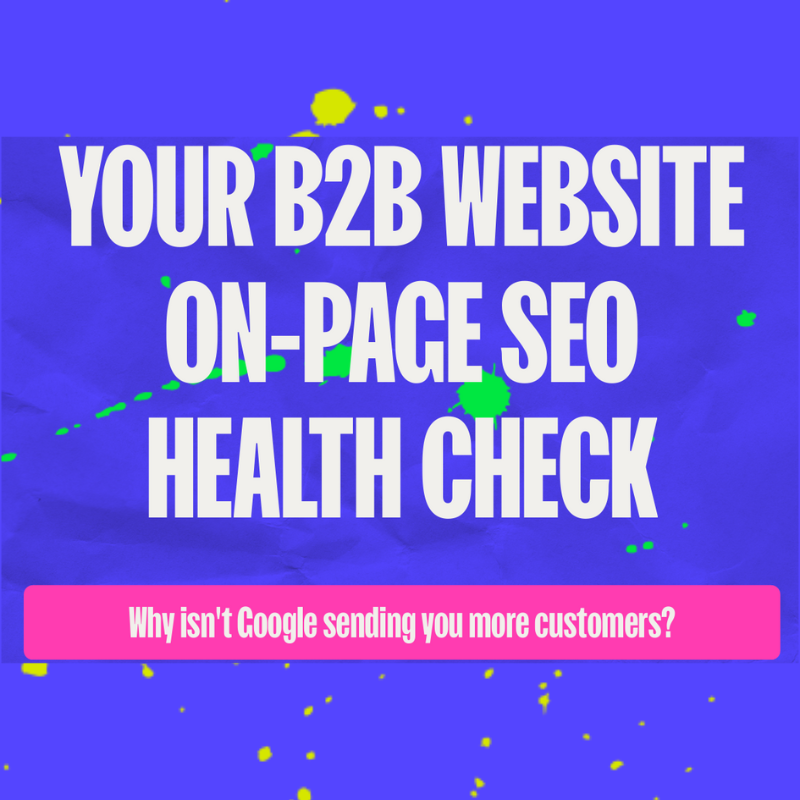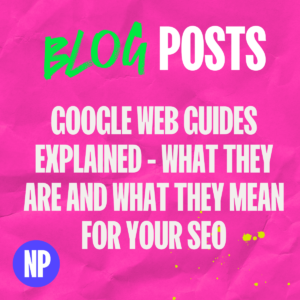You check Google Analytics every week. Traffic’s decent. Maybe even growing. Your blog posts are ranking. Google Search Console shows hundreds of impressions.
But your phone isn’t ringing. Your contact form sits empty. And you’re starting to wonder if SEO is actually worth the effort.
You already know this – traffic without enquiries is pointless. And if you’re getting visitors but no business, something fundamental is broken.
You’re not matching search intent properly, attracting browsers instead of buyers, or your website isn’t set up to convert visitors into clients.
Need help with this?
This is exactly the kind of problem I solve for B2B service businesses. If your traffic looks good on paper but isn’t bringing in enquiries, book a 30-minute discovery call and I’ll tell you what’s broken and how to fix it.
Why you’re ranking but getting no enquiries from search traffic
I worked with a B2B software company who were frustrated beyond belief. Their blog was ranking beautifully. Traffic was climbing month after month. But they hadn’t had a decent enquiry in six months.
When I looked at their rankings, the problem was obvious. They were ranking for things like “what is project management software” and “how to choose project management tools” – all the research questions people ask at the very start of their buying journey.
But they weren’t ranking for “project management software for construction companies” or “best project management tools for small teams” – the searches people make when they’re ready to buy.
Informational searches attract people looking for free education. Commercial searches attract people looking for solutions they’re willing to pay for.
If your blog posts rank but your service pages don’t, you’re probably making the same mistake.

How educational content attracts DIYers instead of buyers
You write a detailed guide about solving a problem your service solves. It ranks well. People love it. But nobody books a call.
That’s because you’ve just taught them how to do it themselves.
Educational content has its place, but if that’s all you’re creating, you’re positioning yourself as a free resource, not a service provider worth paying.
I see this constantly with B2B businesses. They write “how to” guides, step-by-step tutorials, comprehensive DIY advice – and wonder why they only attract people who want to do it themselves.
Decision-makers aren’t searching for tutorials. They’re searching for providers. They want to know if you understand their problem, if you’ve solved it before, and whether you’re the right fit for their business.

Service pages that don’t rank vs blog content that does
Another common pattern – brilliant blog content that ranks well, but service pages that barely exist.
- Your homepage lists what you do in vague terms.
- Your service pages are three paragraphs of generic waffle.
- And you wonder why Google ranks your blog post about “email marketing tips” but ignores your “email marketing services” page.
Google ranks pages that thoroughly cover a topic. If your service page is thin, unclear, or doesn’t match what people are searching for, it won’t rank – regardless of how good your blog post is.
I worked with a marketing consultancy whose blog was getting thousands of visitors monthly. But their “B2B marketing services” page was 200 words of corporate speak with no clear information about who they helped or what they did.
We rewrote it with commercial keywords, clear service descriptions, and specific information about who they work with. Three months later, that page was ranking on page one and generating qualified enquiries.

Conversion problems that stop visitors becoming enquiries
Even if you’re matching search intent and attracting the right audience, they still need to know what to do next.
If visitors land on your website and can’t immediately figure out how to contact you, book a call, or request a quote, they’ll leave. It doesn’t matter how good your content is.
Common conversion path problems I see:
- Your contact form is buried in the footer.
- Your “get in touch” page requires filling in ten fields.
- Your phone number is nowhere on your homepage.
- You don’t have a clear call-to-action on service pages.
The businesses getting enquiries from their traffic make it ridiculously easy to take the next step. Phone number in the header. “Book a call” button on every page. Simple contact forms that take 30 seconds to complete.

What to fix first when traffic isn’t converting
If your website gets traffic but no enquiries, start here:
- Check what you’re ranking for. Are you showing up for commercial intent searches or informational questions? If it’s all “how to” and “what is” queries, that’s your problem.
- Look at your service pages. Are they comprehensive, clear, and written to match what buyers are searching for? Or are they an afterthought compared to your blog?
- Review your conversion path. Can someone figure out how to contact you within five seconds of landing on any page?
- Audit your content strategy. Are you creating content that positions you as an expert worth hiring, or a free advice service?
These aren’t quick fixes. But they’re the difference between traffic that looks impressive in reports and traffic that brings in business.

Free on-page SEO healthcheck
When to get help fixing your traffic conversion problem
If you’ve been working on your SEO for months and you’re seeing traffic growth but no increase in enquiries, something structural is broken.
It might be your search intent matching. It might be your service pages. It might be your conversion path. Or it might be all three.
The good news is that these problems are fixable. The bad news is that fixing them properly takes expertise, time, and a strategy that connects SEO to business results – not just rankings.
If your website gets traffic but nobody’s contacting you, book a free call and I’ll tell you exactly what’s broken.




